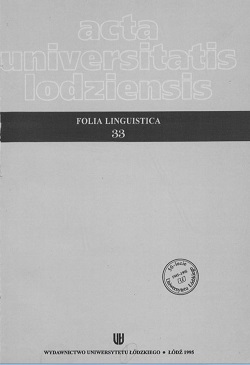Elementy humoru w dziecięcej twórczości językowej
Elements of humour in children’s language creation
Author(s): Sławomira TomaszewskaSubject(s): Preschool education, Developmental Psychology
Published by: Wydawnictwo Uniwersytetu Łódzkiego
Summary/Abstract: Referring to the developmental psychology of child of preschool age, the article discusses kinds of neologistic language creation. The analysed material was derived from the section entitled "Satyra w krótkich majteczkach" published in the magazine "Kobieta i Życie". On the basis of several dozen selected examples the difficulties encountered by a child getting to know its own native language have been presented and discussed. The child makes errors coming within the range of word-formation, inflection, vocabulary, phraseology (also phonetics and syntax, which is not supported by examples). These errors not only surprise, but also amuse the adult receiver of the text, and lor this reason they are called jokes. The word joke does not, however, properly describe that kind of language creation, because joke means conscious action aiming at producing comic effects. Neologistic child creation disappears at the age of around 8 - when full recognition of the rules governing the functioning of language has finally been reached.
Journal: Acta Universitatis Lodziensis. Folia Linguistica
- Issue Year: 1995
- Issue No: 33
- Page Range: 73-89
- Page Count: 17
- Language: Polish

